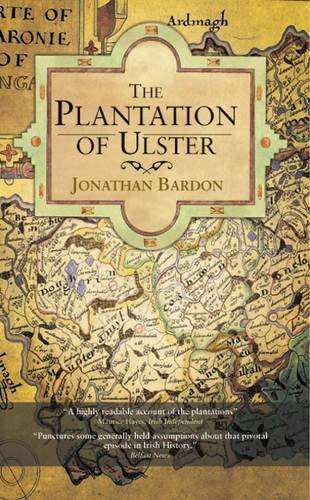 Bangor Historical Society held the first in its series of Bangor 400 lectures on 10 January 2013. The meeting took place in the council chamber of Bangor Town Hall by courtesy of North Down Borough Council. The Deputy Mayor, Marion Smith, welcomed everyone, including some of the councillors. The speaker was Jonathan Bardon, the distinguished historian, and his subject was the British Colonisation of County Down.
Bangor Historical Society held the first in its series of Bangor 400 lectures on 10 January 2013. The meeting took place in the council chamber of Bangor Town Hall by courtesy of North Down Borough Council. The Deputy Mayor, Marion Smith, welcomed everyone, including some of the councillors. The speaker was Jonathan Bardon, the distinguished historian, and his subject was the British Colonisation of County Down.
He explained that the Normans led by John de Courcy, arrived in County Down in the late twelfth century. The O’Neills later dominated the area as Norman power declined.
In the late sixteenth century Elizabeth I was anxious to regain control from the native Irish. Sir Thomas Smith was granted land in the Ards in 1571, but his attempt to establish a settlement failed. Hugh O’Neill of Tyrone then led the Gaelic lords in the Nine Years War against the English. He finally submitted in 1603. By this time James I had become King of England.
Links between Scotland and east Ulster were of longstanding. Hugh Montgomery was the son of the laird of Braidstone in Ayr. He took advantage of the troubles of Con O’Neill who had been imprisoned in Carrickfergus Castle following a fight with English soldiers. Hugh Montgomery helped him to escape. He then made a deal with him: Hugh was to get half of O’Neill’s lands in return for persuading the king to allow Con to keep the other half.
James Hamilton, another Scot, managed to become part of the deal so that the land was split between the three men. O’Neill’s third lay in Castlereagh, Montgomery received Newtownards, while James Hamilton got Bangor. Hamilton and Montgomery brought settlers, especially from Scotland. They constructed houses, established farms and set up markets. The majority of the settlers were Presbyterians.
Sir James built a house for himself in Bangor and in 1611 the Plantation Commissioners reported that there were 80 new houses in the town. Under Charles I efforts were made to enforce Anglicanism. Some of the Presbyterian clergy led an attempt to reach America in the Eaglewing, but they were driven back by bad weather.
By 1640 the native Irish were deeply discontented and the following year rose in rebellion. It looked as if the colonisation would fail. Later Oliver Cromwell, having triumphed in the English Civil War, came to Ireland and defeated the rebels. The settlers regained their land. Mr. Bardon also exploded some of the myths surrounding the plantation such as the fact that today surnames always denote the religion and political outlook of a person.
Don Patterson gave the vote of thanks to the speaker for an excellent, informative talk. This talk also set the scene for the lectures which follow on the Bangor 400 theme.
The next one will be held on Thursday 14 February at 8 pm. The venue will be Bangor Abbey Church and Mark Thompson will speak on Sir Thomas Smith’s attempt to establish a settlement in the Ards in the late sixteenth century. Visitors are very welcome to attend. There will be a small charge for tea for non-members.
